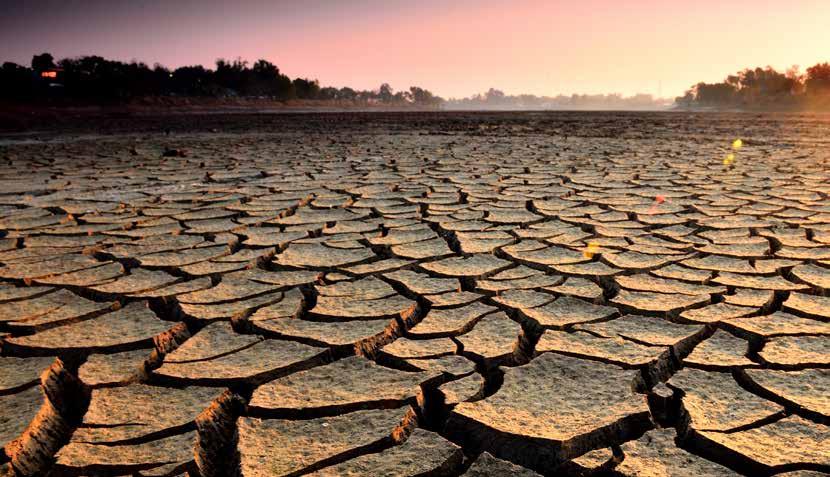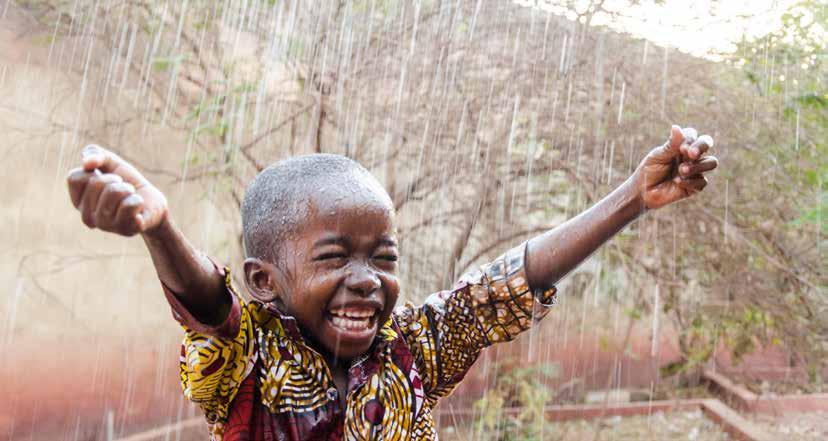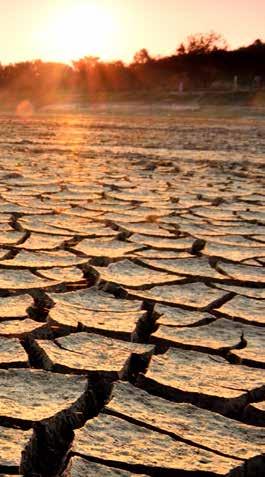
4 minute read
WATER AND CLIMATE CHANGE
To support the achievement of Sustainable Development Goal 6 – water and sanitation for all by 2030 – World Water Day raises awareness of the 2.2 billion people living without access to safe water. Climate change must be taken into consideration as variable climates increasingly affect global water sources.
Water and climate
Advertisement
As climate change increases variability in the water cycle, it induces extreme weather events, reduces the predictability of water availability, affects water quality, and threatens sustainable development, biodiversity and the right to water and sanitation worldwide.
According to the UN-Water Policy Brief on Climate Change and Water, growing demand for water increases the need for energy-intensive water pumping, transportation and treatment, and has contributed to the degradation of critical water-dependent carbon sinks such as peatlands. And, some climate change mitigation measures, such as the expanded use of biofuels, can further exacerbate water scarcity.
The UN has therefore called for an integrated approach to climate change and water management in climate policy and planning, both at a national and regional scale. A business-as-usual approach is no longer an option. Instead, water management must be scrutinised through a climate resilience lens.
The policy brief calls for more investment in improved hydrological data, institutions and governance, education and capacity development, risk assessment, and knowledge sharing. Policies need to ensure the representation, participation, behavioural change and accountability of all stakeholders.
The argument is that significant co-benefits exist to managing both climate and water in a more coordinated, sustainable manner. And solutions for addressing these integrated challenges are available. However, meeting the climate challenge means:
Acting now, considering water as part of the solution, improving water management practices, ensuring transboundary cooperation in adaptation and rethinking financing.

SA acknowledges climate threat
The recently released National Water and Sanitation Master Plan (NW&SMP) acknowledges that climate change will result in there being less water available at a time when the country is dealing with increasing water demands.
Climate change is projected to increase the variability of rainfall throughout South Africa and to reduce average rainfall, particularly in the western part of the country. Climate change will result in more intense floods and droughts, and may also increase the agricultural demand for water due to higher temperatures and a reduced ability to rely on rain-fed agriculture.
The plan calls for a new normal to achieve water security in South Africa. This requires a significant paradigm shift that:
• recognises the limitations of water availability • addresses the real value of water • ensures equitable access to limited water resources • delivers reliable water and sanitation services to all • focuses on demand management and alternative sources of water • considers the impacts of climate change • addresses declining raw water quality.
The NW&SMP states, “The implementation of this plan will enable South Africa to become more resilient to climate change and the increasing intensity of droughts and floods, while meeting the water needs of a growing population and economy.”
DID YOU KNOW?
Wetlands are the most effective carbon sinks on earth, but are declining three times faster than natural forests.

The master plan goes on to acknowledge that strong regulation is critical to achieve water security in South Africa, which includes being resilient to climate change impacts. It also calls for ongoing research, modelling and planning around climate change and its impacts on water security and water infrastructure, as well as the need to initiate a hydrological monitoring centre to re-establish a robust data, monitoring and information capability for more effective water resources planning and climate change forecasting.
Acting now
This year, the South African Department of Environment, Forestry and Fisheries has announced that it will assist municipalities to implement their climate change response strategies. The South African Weather Service will also ramp up efforts to educate local communities so they can better understand climate change and respond appropriately.
Through the department’s environmental programmes, R1.9 billion is to be spent in 2020 to restore wetlands, estuaries and coastal dunes to better protect built infrastructure and human settlements from storms, floods and rising sea levels.
South Africa will also continue to lobby developed countries to provide for an adequate, reliable and predictable source of international funding for both mitigation and adaptation.



